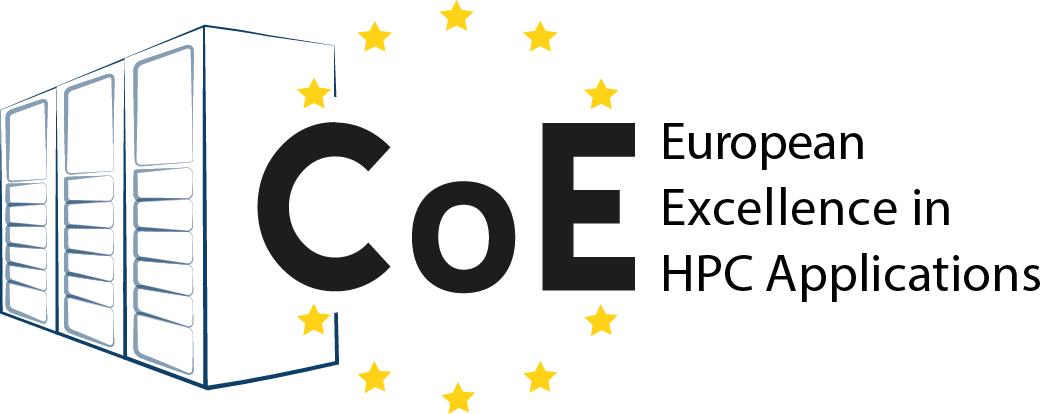- Homepage
- >
- Application Development
We are pleased to present to the European CoE community the first Workshop on Software Co-Design Actions in European Flagship HPC Codes scheduled in conjunction with ISC High Performance (ISC) on June 2nd in Hamburg, Germany. Organised by FocusCoE, SiPearl, Arm Ltd and NVIDIA, this workshop focuses specifically on software co-design actions applied to production-grade community-wide European flagship HPC applications. Scientists representing MaX, EoCoE, POP, BioExcel, TREX, and RAISE Centres of Excellence will share their experiences and lessons learnt in software co-design, which remains a ‘must-do’ to address a complex and dynamic HPC technology landscape with a rich portfolio of choices across CPU architectures and accelerators.
We encourage any in-person participants of ISC to attend the workshop live!
See the schedule below and access the full list of abstracts HERE. Then stay tuned after the event for our News article
including workshop highlights and presentation materials!
Speaker Schedule
- 2:00pm – Welcome Remarks
- 2:05pm – Co-design with Proxy-Apps: A match made in heaven?
- Jens Domke (RIKEN R-CCS) [Invited Speaker]
- 2:30pm – Performance Assessment and Energy Efficiency of MaX Codes
- Daniele Cesarini (CINECA, MaX)
- 3:00pm – Alya – computational fluid dynamics on exascale GPU hardware for the wind community
- Herbert Owen (BSC, EoCoE)
- 3:30pm – Resources for co-design in the POP CoE
- Xavier Teruel (BSC, POP)
- 4:00pm – Coffee Break
- 4:30pm – HPC codesign in GROMACS
- Szilárd Páll (KTH, BioExcel)
- 5:00pm – Co-Designing a high performance and portable library (QMCKL): one of the major challenges addressed by TREX CoE
- William Jalby (UVSQ, TREX)
- 5:30pm – Performance analysis and code optimizations for distributed training of autoencoders
- Rakesh Sarma (JSC, RAISE)
- 5:55pm – Final Remarks
Workshop Organisers
- Filippo Spiga, Alliance Manager and Developer Relations at NVIDIA Ltd
- Jean-Marc Denis, Chief Strategy Officer at SiPearl
- Conrad Hillairet, HPC Engineer at Arm
- Guy Lonsdale, scapos AG / FocusCoE Coordinator
Workshop Programme Committee Members
- Edouard Audit, chair of HPC3 and Director of Maison de Simulation at CEA
- Jean-Pierre Panziera, Chairman of ETP4HPC and Chief Technology Director for High Performance Computing at ATOS
- Lilith Axner, Director of the EuroCC National Competence Center Sweden (ENCCS)
- Dirk Pleiter, PDC Center for High Performance Computing and Professor of Computer Science at KTH
- Estela Suarez, Senior Scientist at JSC and Professor at University of Bonn
- Carlo Cavazzoni, Head of Computational R&D, and Director of the HPC Lab at Leonardo Company ul
SimGrid
SimGrid is a framework for developing simulators of distributed applications that executed on distributed platforms, which can in turn be used to prototype, evaluate and compare relevant platform configurations, system designs, and algorithmic approaches.
SimGrid provides ready to use models and APIs to simulate popular distributed computing platforms (commodity clusters, wide-area and local-area networks, peers over DSL connections, data centers, etc.) As a result, SimGrid has served as the foundational technology for developing simulators and obtaining experimental results for a wide range of distributed computing domains: Grid computing, P2P computing, Cloud computing, Fog computing, Volunteer computing, HPC with MPI, MapReduce.
SimGrid is accurate, scalable, and usable
- Accurate: SimGrid’s simulation models have been theoretically and experimentally evaluated and validated
- Scalable: SimGrid’s simulation models and their implementations are fast and have low memory footprint, making is possible to run SimGrid simulations quickly on a single machine
- Usable: SimGrid is free software (LGPL license) available on Linux / Mac OS X / Windows, and allows users to write simulators in C++, C, Python, or Java.
CoE: POP
Cube
Cube, which is used as performance report explorer for Scalasca and Score-P, is a generic tool for displaying a multi-dimensional performance space consisting of the dimensions (i) performance metric, (ii) call path, and (iii) system resource. Each dimension can be represented as a tree, where non-leaf nodes of the tree can be collapsed or expanded to achieve the desired level of granularity. In addition, Cube can display multi-dimensional Cartesian process topologies.
CoE: POP
